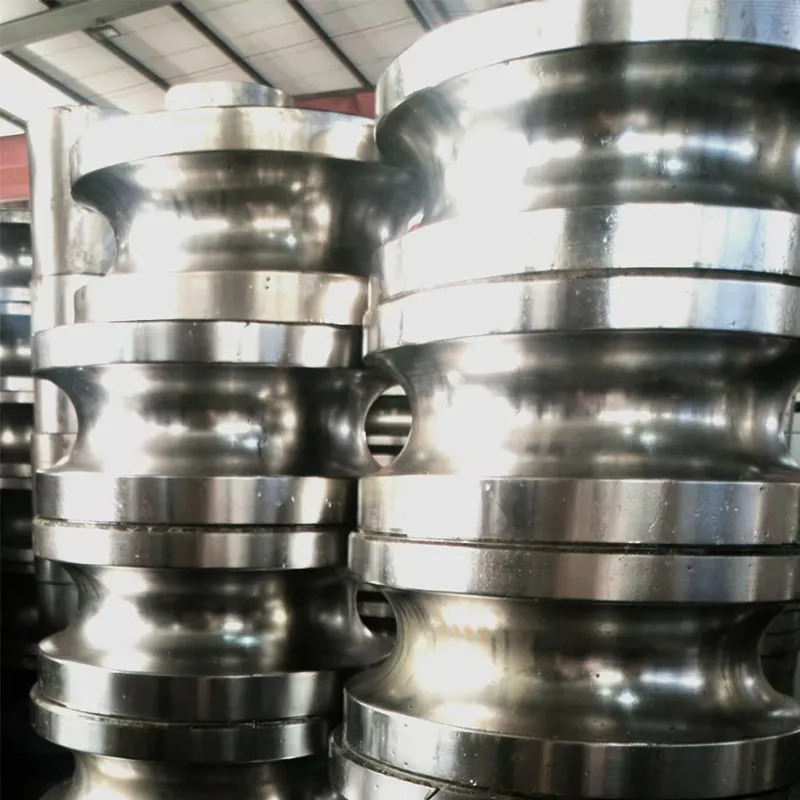profile forming machine
The Profile Forming Machine Revolutionizing Manufacturing Processes
In the world of manufacturing, efficiency and precision are paramount. The profile forming machine stands out as a revolutionary tool designed to streamline the production of various profiles used in construction, automotive, and other industries. This article delves into the functionality, advantages, and applications of profile forming machines, highlighting their significance in modern manufacturing processes.
Understanding Profile Forming Machines
A profile forming machine, also known as a roll forming machine, is a specialized equipment that transforms flat metal sheets or strips into complex shapes and profiles through a series of controlled bending processes. The machine utilizes a series of roll stands or dies that progressively shape the material as it passes through them. Depending on the configuration, these machines can produce a wide range of profiles, including channels, angles, and various custom shapes suited for specific applications.
Key Components and Operation
The operation of a profile forming machine typically involves several components, including the uncoiling system, roll stations, cutting mechanisms, and a control system. The process begins with the uncoiling of the metal sheet, which is then fed through the roll stations. Each roll is precisely designed to shape the sheet to a specific profile as it progresses through the machine.
Cutting mechanisms are often integrated to trim the profiles to the desired lengths, ensuring that they meet the specifications required for their intended use. Advanced control systems enable operators to adjust parameters such as feed speed, temperature, and pressure, allowing for high precision and flexibility in production.
Advantages of Profile Forming Machines
1. Efficiency One of the primary advantages of profile forming machines is their ability to produce large quantities of profiles quickly. The continuous production process reduces downtime, leading to significant cost savings for manufacturers.
profile forming machine

2. Precision These machines are designed to produce profiles with high accuracy. The consistent quality of the output minimizes waste and rework, ensuring that manufacturers can meet stringent quality standards.
3. Versatility Profile forming machines can be adapted to create a wide variety of shapes and sizes, making them suitable for diverse applications. This versatility allows manufacturers to cater to specific market needs without investing in multiple machines.
4. Durability Constructed from robust materials, profile forming machines are built to withstand heavy usage over time. Their durability ensures a long service life, further enhancing their cost-effectiveness.
5. Customization Many modern profile forming machines offer customization options that enable manufacturers to create unique profiles based on specific project requirements. This flexibility can give companies a competitive edge in the market.
Applications in Various Industries
Profile forming machines find applications across multiple industries. In the construction sector, they are commonly used to manufacture roof trusses, wall studs, and other structural components. The automotive industry utilizes these machines to produce components such as support brackets, frames, and reinforcements. Additionally, the HVAC industry benefits from profile forming machines for ductwork and related components.
The rise of advancements in technology, including automated systems and Industry 4.0 integration, has further enhanced the capabilities of profile forming machines. Manufacturers can now leverage data analytics and IoT to optimize production processes, improve quality control, and reduce operational costs.
Conclusion
The profile forming machine has become an indispensable asset in the modern manufacturing landscape. Its ability to produce complex profiles efficiently and accurately aligns perfectly with the demands of today’s industries. As manufacturers continue to seek ways to enhance productivity and reduce costs, the role of profile forming machines will undoubtedly expand, paving the way for innovation and excellence in production processes. As we look to the future, these machines will continue to play a critical role in shaping not only materials but also the very foundation of modern engineering and construction.
-
High Frequency Straight Seam Welded Pipe Production Line|BzZhou Xinghua|Precision Welding&EfficiencyNewsJul.30,2025
-
High Frequency Straight Seam Welded Pipe Production Line - BzZhou Xinghua|Precision Engineering&EfficiencyNewsJul.30,2025
-
High-Frequency Straight Seam Welded Pipe Production Line-BzZhou Xinghua Machinery Equipment Manufacturing Co., LTD.NewsJul.30,2025
-
High-Frequency Straight Seam Welded Pipe Production Line-BzZhou Xinghua Machinery Equipment Manufacturing Co., LTD.|Precision Manufacturing, High EfficiencyNewsJul.30,2025
-
High Frequency Straight Seam Welded Pipe Production Line-BzZhou Xinghua Machinery Equipment Manufacturing Co., LTD.|Precision Steel Pipe Manufacturing&Industrial EfficiencyNewsJul.29,2025
-
High-Frequency Straight Seam Welded Pipe Production Line-BzZhou Xinghua Machinery Equipment Manufacturing Co., LTD.|Precision Steel Pipe Manufacturing&Industrial EfficiencyNewsJul.29,2025


